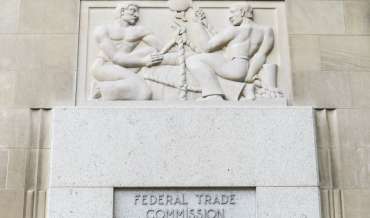ACE American Insurance agreed to a $9.8 million TCPA class action settlement. ACE allegedly used contact lists provided by two banks which resulted in them calling consumers who were registered on the Do Not Call Registry.
ACE made no admissions of liability or wrongdoing but chose to settle in order to avoid the expense and inconvenience of further litigation.
The lawsuit claims that ACE's telemarketing calls offering hazard insurance were in violation of the TCPA (Telephone Consumer Protection Act) because Mr. Boise had not provided “prior express written consent”. He also claimed to have been registered on the National Do Not Call Registry since 2006. Nationstar Mortgage and BB&T Bank, the two mortgage lenders that provided ACE with their phone lists of mortgage holders, were not named as defendants in this case.
The Settlement Class
The class benefiting from the settlement includes all individuals in the United States who are or were customers of Nationstar Mortgage or BB&T Bank, on or after October 16, 2013 who:
- Received more than one telephone call made by or on behalf of Defendant within a 12-month period; and
- To a telephone number that had been registered with the National Do Not Call Registry for at least 30 days.
The TCPA Class Action Settlement
The court approved payment of $2.9 million in attorney fees which is 30% of the $9.8 million settlement fund. The lead plaintiff, Mr. Boise, will be awarded $10,000. Class members are expected to receive at least $55 each.
Odd Twist - Attorney Fees Challenged
One of the members of the class hired lawyers who formally objected to the request for $2.9 million in attorney fees. The plaintiff’s attorneys were accused of providing a cookie-cutter brief filed by a serial litigator, calling it “generic” and “sloppy”. The class members' lawyers argued that the court should limit the award to an amount between 20% and 25% of the total settlement, which they stated was the more common fee amount requested in TCPA class actions.
The plaintiff’s attorneys defended their position by arguing that a 30% fee is less than a typical contingency fee. They also suggested that if the case had not settled, it could have resulted in $491 million in damages that would have resulted in a $9.76 million fee.
All sides did agree that any unclaimed funds from the settlement should go toward rebuilding the areas damaged by Hurricanes Harvey and Irma.
Why settle?
ACE American believes they were in the right, but chose to settle based upon a financial risk assessment of fighting the battle before a judge and the possibility of losing a great deal more money. This may have been a prudent business decision, but what is the point of such TCPA lawsuits and the regulations that are supposedly being enforced? Do similar lawsuits and the resulting settlements make the lives of consumers better or do they simply enrich a few plaintiffs and their attorneys?
So how can you protect your business against costly TCPA lawsuits?
1. Marketers need to understand the channels on which they are sending telemarketing messages and the laws governing those channels. ACE should have run their entire campaign by a TCPA specialist who could have told them that they needed to scrub against the DNC registry and keep records.
2. Companies must get express written consent, to make telemarketing calls or send promotional text messages. ACE should have obtained prior express written consent before beginning their campaign.
3. Find litigators who may be hiding in your data. Identify known serial TCPA litigators and plaintiffs in your contact lists and weed them out before any inbound or outbound campaign to reduce the risk of being targeted for a TCPA class action lawsuit. If ACE had scrubbed their contact lists for known TCPA litigators, this class-action suit may never have happened at all.
Bottom Line
The gap between the use of technology and the law, as well as the confusing language of the TCPA has created a new “lawsuit mill” where serial plaintiffs and litigators are bringing class action and individual lawsuits against marketers of all industries. They may already be hiding in your data. The first (and easiest) line of defense is to identify and remove known TCPA litigators from your contact lists and create each campaign using TCPA compliance best practices.





